Ever wondered if your solar panels are as efficient as they could be? You’ve made an investment in solar technology, but how often should solar panels be cleaned to ensure peak performance and greater savings? Neglecting panel maintenance can silently drain your system’s output. Uncover the essential facts and actionable steps that can help you boost efficiency, save money, and extend the lifespan of your solar system—starting today.
Curious About How Often Solar Panels Should Be Cleaned? Gain the Answers That Improve Efficiency
Keeping your solar panels spotless is more than just about aesthetics—it's a crucial factor in unlocking your system’s true potential. The frequency at which you clean your solar panels can directly influence energy output , maintenance costs, and the overall lifespan of your solar system . Industry research reveals that accumulated dust, dirt, pollen, and bird droppings may considerably reduce energy production, especially if left unchecked through the summer months or in regions prone to heavy air pollution.
Many owners ask, " How often should solar panels be cleaned? " The answer isn’t one-size-fits-all. Local climate, surrounding foliage, bird activity, and environmental factors will all impact how frequently your panels need attention. In this comprehensive guide, you’ll uncover the science behind solar panel cleanliness, industry standards for cleaning solar panels, signs your panels need immediate cleaning, and proven maintenance strategies you can put to use today.
- You’ll uncover the science behind solar panel cleanliness
- Industry standards for cleaning solar panels
- Signs your panels need attention
- Proven tips for optimal panel maintenance
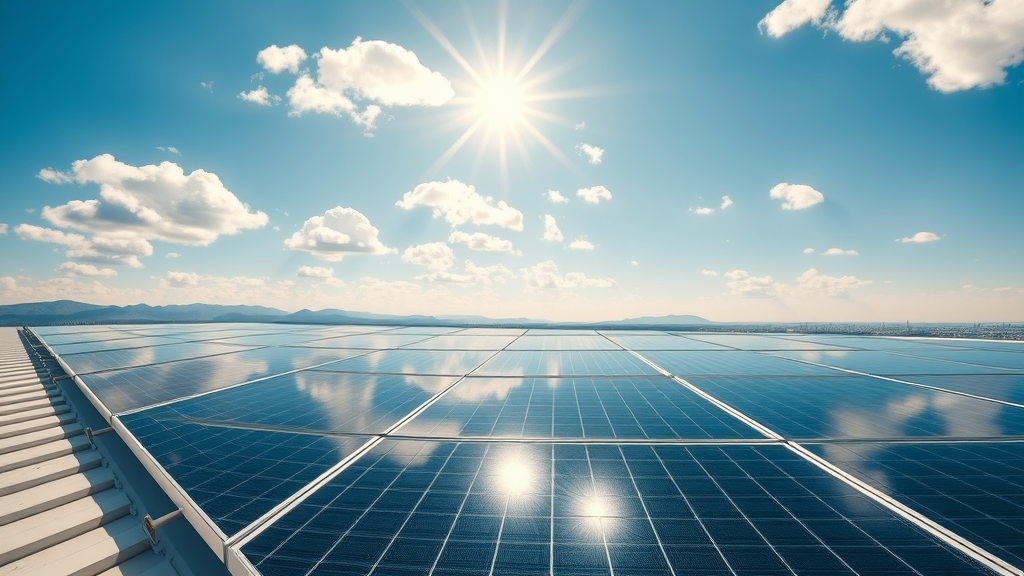
Frequency Matters: How Often Should Solar Panels Be Cleaned for Peak Solar Panel Output?
The frequency with which you clean your solar panels can dramatically affect their efficiency and lifespan. If you reside in an urban setting with minimal foliage and pollution, cleaning might be necessary once or twice yearly. Conversely, those in rural, coastal, or high-pollution areas may need a more frequent routine to clear away stubborn dust and debris. Solar panel maintenance isn’t just about removing dirt—it’s a critical component for sustaining optimal energy output and reliability, ensuring that your investment in solar energy continues to pay dividends year after year.
Neglecting maintenance equates to letting profits slip through your fingers. Dirty panels can lose as much as 20–30% of their output in the most affected regions, leading to unnecessary spikes in your energy bills. Reviewing manufacturer guidelines and consulting with local solar experts will give you a tailored plan to maximize your panel’s performance. The frequency of panel cleaning should never be underestimated; regular cleaning is proven to keep your solar system operating at its best.
Industry Guidelines on How Often Solar Panels Should Be Cleaned
According to leading solar panel manufacturers and industry experts, the general recommendation is to have your solar panels cleaned every 6-12 months. Some manufacturers set their warranties based on the assumption that owners will follow prescribed panel maintenance schedules, which often include regular inspections and cleaning. Not adhering to these standards can not only impact your system’s efficiency but may also void your warranty.
For residential solar systems in cleaner environments, annual cleaning is often sufficient. However, in high-dust or heavy bird activity zones, a bi-annual or even quarterly cleaning schedule is more appropriate. As always, it's essential to check the manufacturer's maintenance guidelines for your specific panels. This ensures both safe operation and compliance with warranty terms, while keeping your solar energy output at its maximum.
Professional cleaning services often recommend scheduling cleanings after the pollen season, heavy storms, or periods of significant construction nearby. These events can leave layers of grime or debris on your panels, reducing effective sunlight absorption. Reviewing your system’s performance data on your inverter’s app can also provide clues about when cleaning may be due.
Factors Influencing Cleaning Frequency: Local Weather, Environment, and Solar Panel Placement
Your location plays a significant role in determining how often solar panels should be cleaned . Urban environments typically see less soiling unless close to construction or pollution sources, while rural or agricultural areas may contend with dust from fields, pollen, and animal activity. Coastal regions introduce the added challenge of salt spray, which can quickly dull panel surfaces, while areas under direct tree cover may see regular droppings from birds and other wildlife.
Panel tilt and placement also matter. Flat or low-angled panels won’t “self-clean” as effectively when it rains, leading to more frequent cleaning needs. Similarly, panels mounted near tall trees or underneath regular flight paths for birds may require you to clean more often, especially after major pollen drops or nesting seasons.
Regular monitoring of output data, alongside visual inspections, enables you to adapt your maintenance schedule to match local conditions. By anticipating and reacting to specific environmental factors, homeowners and businesses alike can prevent gradual losses in energy production and avoid potentially costly repairs related to panel neglect.
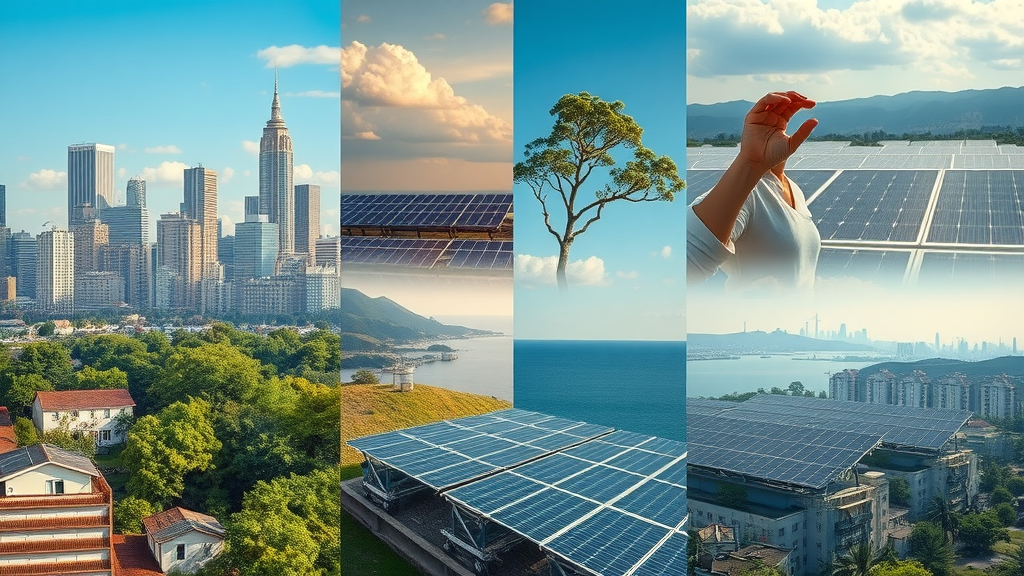
Case Studies: Comparing Solar Panel Performance Before and After Regular Cleaning
Case studies from leading solar experts highlight the measurable improvement that comes with regular solar panel maintenance . In a 12-month study of two neighboring solar installations—one maintained quarterly, the other left untouched—results showed the frequently cleaned panels producing up to 18% more energy on average. Particularly in high-pollen or drought-prone areas where rain rarely helps, frequent manual cleaning made a dramatic difference.
Homeowners in arid climates reported visible accumulations of dust and dirt reduced the clarity of their panels, often requiring spot cleaning every two to three months. After a thorough cleaning, system monitoring tools registered an immediate uptick in energy output , even when a thin film of grime was removed—proof that even marginal buildup impacts efficiency.
Commercial solar array managers have documented similar results at scale. Facilities that incorporated scheduled cleaning into their ongoing panel maintenance reported fewer technical malfunctions related to overheating and surface degradation. The collected data underscores a vital point: regular cleaning is not simply cosmetic, but a smart economic strategy for maximizing returns on solar investment.
| Environment | Cleaning Frequency | Key Considerations |
|---|---|---|
| Urban | 1-2 times per year | Monitor for construction dust and air pollution. |
| Rural | 2-4 times per year | Address dust from agriculture and pollen during spring. |
| Coastal | Quarterly or after storms | Salt spray and bird droppings are common concerns. |
| High-Pollution | Quarterly or more frequently | Industrial and vehicular pollution increase soiling rates. |
Understanding Solar Panel Maintenance: Why and How Often Should Panels Be Cleaned?
Consistent solar panel maintenance lies at the heart of dependable system performance. Without routine care, even the most advanced solar panels become susceptible to efficiency drops and accelerated wear. But what makes regular cleaning and inspection so crucial? When dirt, detritus, or films coat the surface of the panel, the amount of sunlight reaching the photovoltaic cells diminishes—reducing your solar energy production and overall return on investment.
The optimal cleaning frequency merges manufacturer recommendations with real-world conditions specific to your site. Rainfall often helps but isn’t sufficient where pollutants stick to surfaces or where local dust, birds, or pollen are prevalent. Integrating cleaning into your annual or semi-annual solar panel maintenance enhances not just output but also the longevity of your entire solar system .
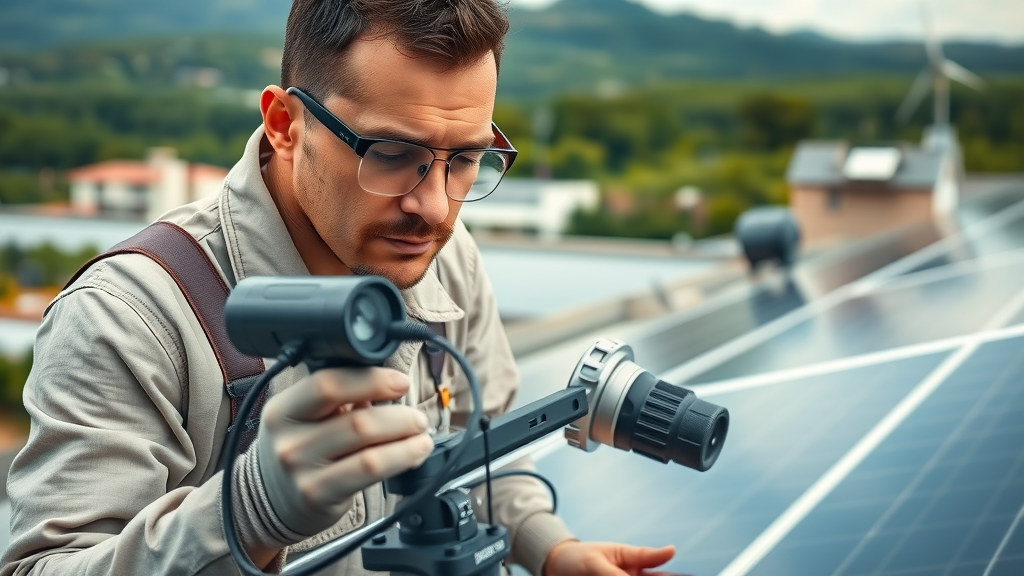
Solar Panel Maintenance: Extending the Lifespan and Reliability of Your System
Proper panel maintenance encompasses much more than periodic cleaning. It includes visual inspections for degradation, checking connections and wiring, and ensuring mounting hardware is secure. Cleaning, however, remains the frontline defense, as it directly preserves the light-absorbing capabilities of every solar panel .
Routine solar panel cleaning can delay the need for costly repairs and replacements by preventing build-ups that contribute to corrosion or create hotspots. Ensuring your system is free from obstructions and residue helps keep inverter and monitoring equipment functioning correctly, allowing you to catch anomalies early before they become failures.
Maintenance should also consider the seasonal cycles that affect debris accumulation. Schedule an extra inspection after intense storms or the height of the pollen season. This approach increases system reliability while safeguarding your solar investment for the long haul.
Dirt, Debris, and Solar Panels: How Soiling Reduces Efficiency
Dust and dirt , pollen, water spots, leaf litter, and especially bird droppings can create persistent barriers on your panels. Their cumulative effect blocks sunlight, causing significant reduction in energy output , particularly during crucial daylight hours. Studies show that just a slight haze of dust may lead to a 5% drop in performance, and heavy soiling in extreme environments can cause up to a 30% loss.
Environmental factors compound these effects. In dry climates, infrequent rain and high winds allow particles to build up without natural cleaning. Meanwhile, humid or coastal regions suffer from sticky deposits, salt, and moisture, which are especially stubborn to remove.
Neglecting to clean the panels allows dirt and debris to etch into the glass, leading to permanent marks and further loss in efficiency. Regular maintenance not only helps restore peak energy production but also prevents gradual system degradation and long-term efficiency loss.
"Proper panel maintenance can boost solar system efficiency by up to 30% in high-dust areas." - Industry Expert
Practical Insights: How To Clean Your Solar Panels and The Costs Involved
Cleaning your solar panels safely and effectively requires the right tools and methods—no pressure wash , no harsh detergents, and always with personal safety as the top priority. Whether you opt for a DIY approach or hire a cleaning service , the benefits can be immediate: restored clarity means improved energy output and a longer panel lifespan. In this section, we’ll walk you through practical steps and compare the costs between professional and do-it-yourself cleaning.
While basic cleaning may cost as little as a bucket of mild soap solution and a soft brush, professional cleaning companies often charge by the panel or system size. The peace of mind from a professional’s expertise is valuable—especially for hard-to-reach installations or heavily soiled panels. Whichever route you choose, routine service is always a wise investment in the reliability and effectiveness of your solar system.
Step-by-Step Guide: How to Safely Clean Your Solar Panels
1. Turn off your solar system before cleaning to avoid electrical hazards and prevent interfering with panel monitoring. 2. Check the weather —choose a cool, cloudy morning or late afternoon to reduce streaking and prevent panel cracking from sudden temperature changes. 3. Remove loose debris (leaves, twigs) using a leaf blower or soft brush. 4. Fill a bucket with lukewarm water and a small amount of mild soap . Avoid abrasive cleaners and harsh chemicals. 5. Using a long-handled soft brush or a sponge, gently scrub each panel's surface, focusing on stubborn spots like bird droppings . 6. Rinse with clean water—ideally deionized or distilled to avoid streaks or mineral residue. 7. For safety, never stand or climb directly on panels. Use scaffolding, harnesses, or hire a professional if the roof is steep or slippery. 8. Allow panels to air dry before restarting your solar system and monitoring energy output for improvement post-cleaning.
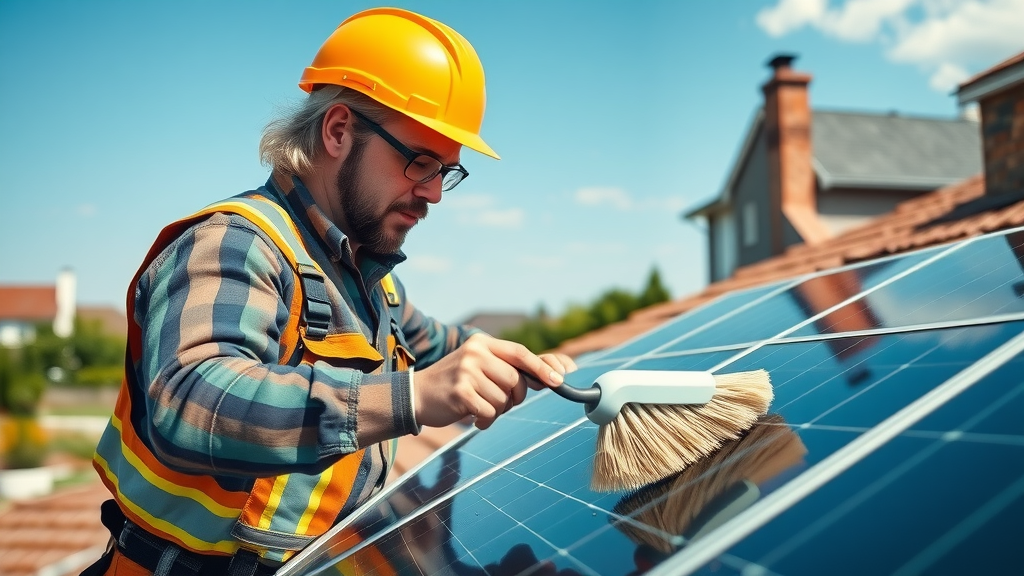
DIY vs. Professional Panel Maintenance: Which Is Best for Your Solar System?
Undecided between DIY care and hiring a pro? Both options have their place. DIY cleaning works for easily accessible panels on single-story homes or ground-mounted arrays, especially if you have the proper cleaning solution and brushes. It offers cost savings, but requires caution—incorrect technique can scratch the glass or void your warranty.
On the other hand, professional cleaning services bring specialized equipment and safety protocols for multi-story buildings, steep rooftops, or large arrays. These experts know how to clean the panels efficiently without damaging connections or delicate surfaces. The added cost is offset by their speed, effectiveness, and assurance of preserving your system’s performance.
When making your choice, consider not just out-of-pocket costs, but also system access, your safety, and the specific maintenance requirements of your solar panel system . Regular, proper care—regardless of method—is the key to sustaining your solar energy production.
Video: Watch a Demonstration of Effective Solar Panel Cleaning Techniques
For a clear visual guide, check out a reputable online demonstration where solar experts show step-by-step techniques for cleaning solar panels without risking damage or injury. These videos provide helpful tips on safety, materials selection, and identifying when to call for professional help.
Visual learners can especially benefit from observing actual cleaning in action—seeing how to treat tough spots, avoid scratching the surface, and ensure even, streak-free results. Many manufacturers’ websites or trusted solar energy channels offer up-to-date video tutorials worth reviewing before your next maintenance round.
- Soft-bristled brush or non-abrasive sponge
- Deionized or distilled water
- Mild soap (avoid detergents with ammonia or bleach)
- Telescopic extension pole (for reaching distant panels)
- Safety harness and non-slip footwear (for rooftop work)
- Low-pressure hose or sprayer
- Microfiber cloths or squeegee (to avoid streaks)
| Cleaning Method | Cost | Time Commitment | Effectiveness | Safety |
|---|---|---|---|---|
| DIY | Low ($10-$50/cleaning) | 1-2 hours | Good, with proper technique | Risks for high/steep roofs |
| Professional | Medium ($100-$400/visit) | 30–60 minutes | Excellent, thorough | High (trained and insured) |
Risks of Neglect: What Happens If You Don’t Clean Your Solar Panels
If you skip panel maintenance , performance losses will quickly follow. Dirt buildup blocks essential sunlight, but even worse, neglected panels can develop permanent "hot spots"—areas where debris causes overheating and potentially damages cells. Regular cleaning safeguards your solar panel system from such risks, extending its useful life and avoiding costly repairs down the line.
Warranties from most manufacturers clearly state that neglecting care, such as failing to clean the panel surface, may void coverage. If left unaddressed, mild soiling turns into caked-on layers, obstructing not just light but potentially leading to corrosion of connectors, delamination, or short circuits in your array. Solar energy production drops further the longer maintenance is ignored.
Avoid these avoidable losses with straightforward, scheduled cleanings. Acting early prevents minor grime from escalating into expensive system failures.
Consequences of Poor Solar Panel Maintenance on System Performance
Ignoring the need to clean your solar panels leaves your system vulnerable to performance issues that compound over time. The surface of the panel becomes less reflective, reducing photon absorption and cutting into electricity generation. What starts as a 5-15% loss can accumulate into long-term financial setbacks as well as unexpected downtime.
Common contaminants like bird droppings , industrial soot, and airborne chemicals can also damage the integrity of the glass and encapsulation. This increases the chances of irreversible panel etching and internal corrosion. Furthermore, poor panel maintenance creates an environment ripe for mold and lichen growth, especially in damp climates.
Ultimately, the cost of neglect is measured not just in decreased energy output , but also in shortened panel life, voided warranties, and avoidable repair expenses. Judicious, regular cleaning is the simple solution to these preventable problems.
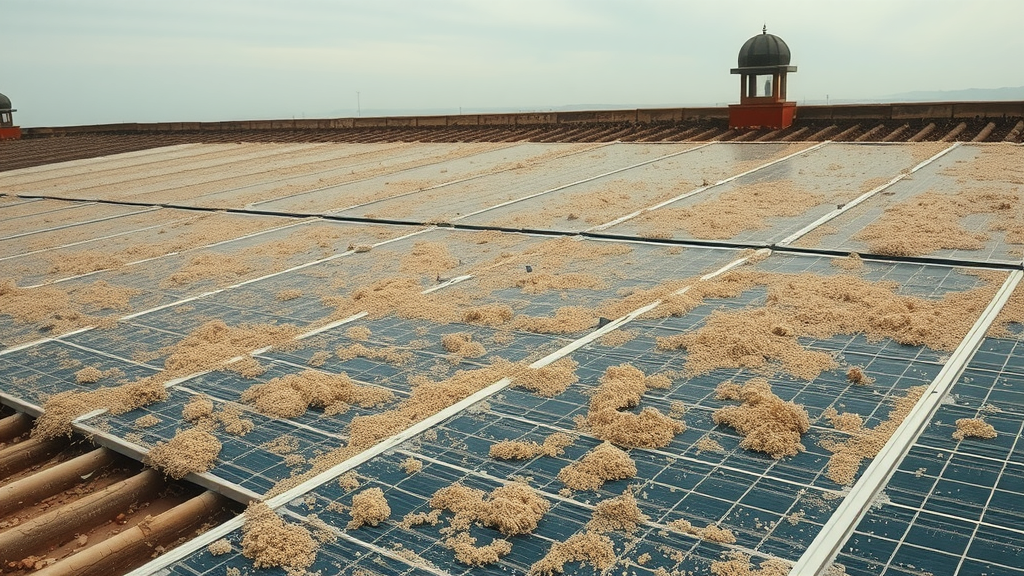
How Often Should You Inspect for Signs Your Solar Panels Need Cleaning?
Smart panel maintenance isn’t only about scheduled cleaning—regular inspection is crucial, too. Inspect your panels visually at least every two to three months, or after dust storms, heavy pollen events, or seasonal leaf drops. Use a performance monitoring app to track energy output and look for sudden dips that can’t be explained by weather or shade.
Common signs it’s time to clean the panels include visible dust, streaks, or buildup, a sharp spike in your electricity costs, or a mismatch between expected and actual system output. Early intervention allows for easy removal of contaminants before they become entrenched. Make panel inspections part of your household’s or facility’s regular routine.
- Notable drop in daily energy output or higher utility bills
- Visible streaks, haze, or patches of dirt/pollen on panels
- Bird droppings or tree sap spotted on the surface
- Spots that remain after a rainstorm
- Warning messages or alerts from your solar monitoring system
Real-World Examples: Solar Panel Cleaning Intervals Across Different Environments
Cleaning intervals are rarely universal; they shift with installation type and environmental exposure. By understanding how residential and commercial solar systems differ, and how local climate dictates panel care, you can tailor your maintenance plan for maximal return.
Residential systems may be subject to unique site-specific factors, like overhanging trees, infrequent rain, or neighborhood construction. Commercial arrays, meanwhile, often have more rigid cleaning schedules due to scale and higher stakes for lost energy output .
Residential vs. Commercial Solar Panels: How Cleaning Frequency Varies
Homeowners should visually inspect panels every quarter, with hands-on cleaning two to four times a year, based on local conditions. Suburbs with minimal dust may get by with annual cleaning, while houses near fields, highways, or water may need to clean more frequently.
Commercial operators, responsible for hundreds or thousands of panels, typically implement monthly inspections and quarterly cleaning—sometimes even more often for arrays near airports, production plants, or agricultural zones. Their investment in regular panel maintenance is returned in steady energy production and lower downtime.
Facility managers and solar system owners should track both visual signs and actual output data, ensuring that any significant anomaly is swiftly addressed via additional cleaning or inspection.

Climate and Location: How They Influence How Often You Should Clean Solar Panels
The local climate dictates not only the cleaning frequency but also the techniques and timing best suited for your solar panel system . Dry, arid locations are infamous for dust and sand accumulation, while temperate regions may see issues tied to leaf litter or seasonal pollen bursts.
In coastal environments, salt accumulates quickly and is only partially washed away by rain, necessitating more frequent, thorough cleaning. High-pollution urban cores introduce smog particles and industrial soot, making solar panel cleaning a frequent necessity—sometimes monthly.
By closely matching cleaning schedules to local weather and air quality reports, and remaining flexible as seasons shift, owners can ensure maximum energy output and system reliability throughout the year.
| Climate/Region | Cleaning Interval | Special Concerns |
|---|---|---|
| Desert/Arid | Every 2-3 months | Dust, sand storms, high solar irradiance |
| Temperate | 1-2 times per year | Spring pollen, leaf drop in autumn |
| Coastal | Quarterly or after storms | Salt spray, seagull droppings |
| Urban/Industrial | Quarterly or after smog events | Air pollution, construction activity |
Expert Recommendations and Best Practices for Solar Panel Maintenance
Consistently high solar panel performance results from following proven panel maintenance practices. Always consult your panel manufacturer’s manual for specific cleaning protocols. Whether using mild soap or water alone, avoid harsh chemicals and ensure you never walk on or push hard against panel surfaces.
Schedule your cleaning for times when sunlight is weakest to prevent streaks and accidental cracking. Document maintenance activity, including date, observations, and any before/after changes in energy output . Regularly update your skills by referencing credible tutorials, and never hesitate to call a professional if the installation is high or awkward to reach.

Top Maintenance Tips to Maximize Solar System Output
- Monitor your inverter data for sudden drops.
- Visually inspect for residue or bird droppings frequently.
- Use dedicated cleaning equipment and never rough scrub.
- Schedule professional maintenance for difficult-to-access installations.
- Check hardware and wiring during each cleaning session.
- Document each cleaning to track system trends over time.
Video: Experts Share Their Secrets for Maintaining Solar Panels Year-Round
Many leading solar experts recommend video tutorials for a dynamic, in-depth look at year-round maintenance. These expert insights cover unique seasonal risks, new cleaning technology, and detailed protocols, empowering you to keep your solar system in peak form regardless of location.
Engage with certified industry professionals through webinars, Q&A sessions, and on-site demonstrations to continuously improve your panel maintenance know-how. Informed owners get the most from their solar technology!
Maximizing the Lifespan of Your Solar Panels Through Regular Maintenance
Integrated, routine solar panel maintenance will add years of productive life to your panels while protecting your initial investment. By pairing cleaning with ongoing inspections and adopting expert-backed best practices, you can enjoy steady, reliable solar energy and lower utility costs for decades.
Stay proactive: schedule your first cleaning at installation, record all maintenance activities, and review system performance regularly. Small, steady investments in panel maintenance today ensure outsized savings and energy production in the future.
A well-cared-for solar system pays dividends far beyond its planned lifetime—commit to its maintenance and watch your investment thrive!
People Also Ask: Essential Questions About How Often Should Solar Panels Be Cleaned
How do I know if my solar panels need cleaning?
Signs like decreased output, visible dust or debris on the surface, or a spike in your energy bills often indicate it’s time for cleaning. For accurate assessment, monitor your system's performance via the inverter or app.
Does cleaning your solar panels really make a difference?
Absolutely. Numerous studies show regular panel maintenance improves system output and efficiency, especially in dusty or high-pollen regions. Even light soiling can cut production by several percent.
Can I clean my solar panels myself?
Yes, you can clean your solar panels if you follow safety guidelines and use proper equipment, such as soft brushes and deionized water. However, complex or high installations may require a professional cleaning service.
What happens if you don't clean your solar panels?
Failure to maintain solar panels can result in permanent efficiency loss, increased operating temperatures, damage from debris, and voided warranties due to neglect of basic panel maintenance.
Comprehensive FAQs About How Often Should Solar Panels Be Cleaned and Panel Maintenance
- Is rainwater enough to keep solar panels clean? — Rain helps, but isn’t sufficient to remove sticky residues or heavy grime. Supplement with manual cleaning where pollution or pollen is high.
- What detergents are safe to use? — Use only mild soap solutions without harsh chemicals. Avoid substances containing ammonia or bleach.
- Can panel cleaning be scheduled during normal maintenance? — Absolutely. Combine cleaning with routine system inspections for efficiency and convenience.
Key Insights: How Often Should Solar Panels Be Cleaned for a Long-lasting Solar System
- Adjust cleaning frequency according to environment—quarterly for high-dust areas; semi-annually for urban or temperate zones.
- Inspect panels regularly for visible dirt, bird droppings, or unexpected declines in output.
- Pair cleaning with thorough hardware and electrical inspections for comprehensive maintenance.
- Choose safe equipment and, where in doubt, hire professional solar panel cleaning services.
- Prioritize documentation—track your solar system’s output before and after routine maintenance.
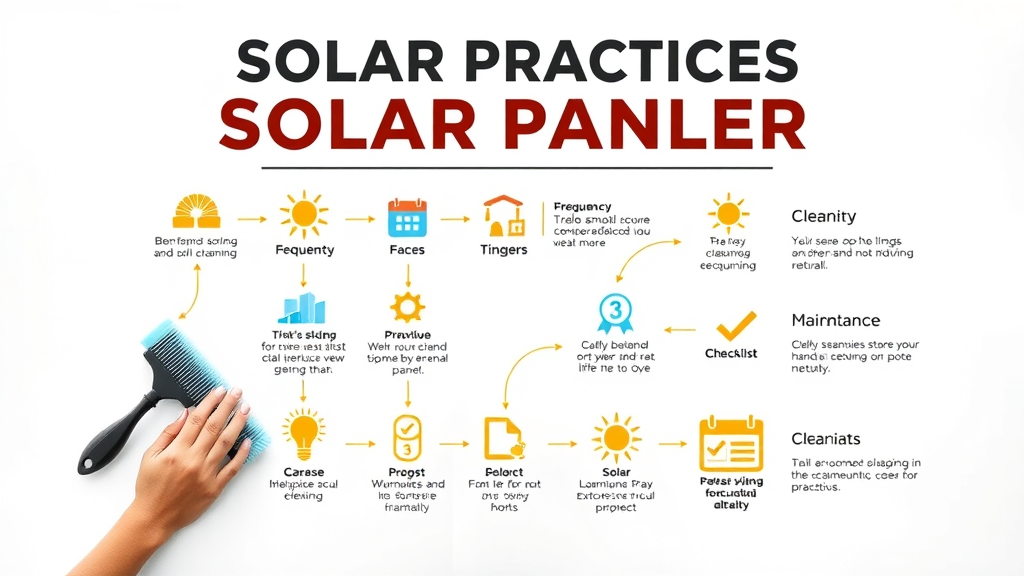
Unlock Full Solar Potential: Commit to Effective Panel Maintenance Today
Ready to maximize your solar investment? Implement a tailored solar panel cleaning schedule and consult with a certified provider for expert guidance and solar panel maintenance.
Conclusion: Take charge of your system’s output and longevity—start a personalized solar panel cleaning plan and consult certified experts for ongoing panel maintenance .
Maintaining clean solar panels is essential for optimal energy production and system longevity. The frequency of cleaning depends on various factors, including environmental conditions and panel placement.
General Recommendations:
-
Standard Cleaning Frequency: It’s generally recommended to clean solar panels at least twice a year to maintain efficiency. ( raggieenergy.com )
-
Optimal Cleaning Time: Cleaning is best performed in the early morning or evening to avoid thermal stress on the panels, which can occur if cleaned during high temperatures. ( raggieenergy.com )
Environmental Considerations:
-
Dusty or Polluted Areas: In regions with heavy dust or industrial pollution, increasing the cleaning frequency to once every 3-4 months is advisable. ( raggieenergy.com )
-
Pollen Seasons or Agricultural Zones: During high pollen seasons or in areas with frequent agricultural activities, cleaning every 3 months can prevent efficiency losses due to debris accumulation. ( raggieenergy.com )
-
Dry Climates: In arid regions with minimal rainfall, quarterly cleaning is recommended, as rain isn’t sufficient to remove all dirt and debris. ( raggieenergy.com )
-
Humid Areas: In regions with regular rainfall, cleaning can be less frequent, approximately once every 6 months, since rain can help wash away some contaminants. ( raggieenergy.com )
Special Situations:
-
Performance Decline: If there’s a noticeable drop in energy production (e.g., a decrease of 5%-10%), it’s advisable to clean the panels, regardless of the regular schedule. ( raggieenergy.com )
-
Seasonal Cleaning: Conducting cleanings after specific seasons, such as post-fall (after leaves have fallen) and post-summer (after pollen season), can address seasonal debris accumulation. ( raggieenergy.com )
Cleaning Methods:
-
Tools: Use a soft brush, sponge, or rubber squeegee to avoid scratching the panels. ( raggieenergy.com )
-
Cleaning Agents: Employ mild soapy water or specialized solar panel cleaners, steering clear of abrasive or corrosive substances. ( raggieenergy.com )
-
Drying: After cleaning, gently dry the panels with a soft cloth or squeegee to prevent water spots and streaks. ( raggieenergy.com )
Professional Maintenance:
-
Regular Inspections: Scheduling professional inspections at least once a year can ensure the system’s performance and safety. ( raggieenergy.com )
-
Automatic Cleaning Systems: For extensive installations, considering automated cleaning systems can save time and effort. ( raggieenergy.com )
By tailoring the cleaning schedule to your specific environmental conditions and adhering to proper maintenance practices, you can significantly enhance your solar panels’ efficiency and extend their operational lifespan.
 Add Row
Add Row  Add
Add 





Write A Comment